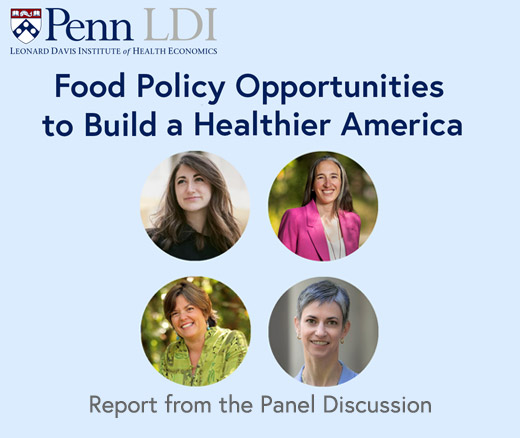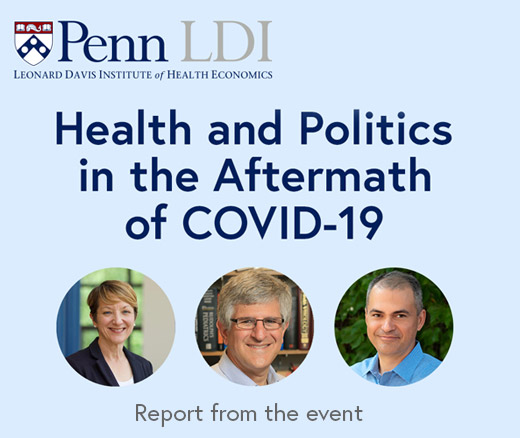
Contradictions That Confuse Federal Food Policies
Announcing Bold New Goals While Crippling the Infrastructure Needed to Achieve Them
Population Health
Blog Post
Vaccine hesitancy, the delay or flat-out refusal of vaccination, is not monolithic—and neither are the vaccine concerns of those individuals who are hesitant. To address their varying concerns, we must engage communities with efforts that go beyond providing facts and figures to connect in a culturally appropriate and empowering way.
Because of safe and effective vaccines, many vaccine-preventable diseases are now “out of sight and out of mind.” However, recent events have forced us to reconsider the role and value of vaccines, including not only the COVID-19 pandemic but also an imported case of polio in New York—the first case in the United States since 2013—and rising case counts of monkeypox, which surpassed 17,000 as of August 26, 2022.
Historically almost all children received at least most recommended vaccines, largely due to school and daycare entry requirements. However, coverage rates among children have dipped for some vaccines, while the use of adult vaccines has been persistently low for years. Slight declines in coverage pose risks for individuals who are unvaccinated or too vulnerable to get vaccinated.
What’s behind these declines in coverage? Reasons people do not vaccinate include:
The continuum of vaccine attitudes means there is no “one-size” fits all approach to talking about them. Individuals who opts-out of the influenza, COVID-19, and pneumococcal vaccines, for example, may opt in for others like measles or rotavirus. People are on a spectrum of acceptance, somewhere in between “accept all” and “refuse all” with a “moveable middle” of people who are largely unsure or selectively vaccinating.
Anti-vaccination sentiment and vaccine controversies have existed since the first inoculation of smallpox vaccine. However, most individuals who do not vaccinate are hesitant rather than outright against vaccines. The following five actions address the needs of the “moveable middle”:
Hesitancy was around long before COVID became a household word. The lower demand than expected and opposition encountered during the COVID vaccination campaigns offer an opportunity to focus on patients’ perceptions, attitudes, and beliefs for each vaccine. It is not until widespread outbreaks—the frequency of which has been increasing—that many people feel the urgency and the enormity of what vaccines can prevent. When diseases disappear, the risk perception is low and complacency grows, reducing vaccination rates so that the cycle repeats. Our research and experience show that empowering decision making—through conversations rooted in equality, immanent value, and self-determination—is central to building trust. Building a trusted platform for health and vaccine conversations is key to closing the gap in health equity for all Americans.
The study, “Factors Influencing Parental and Individual COVID-19 Vaccine Decision Making in a Pediatric Network,” was published in the Vaccines Journal on July 31, 2022. Authors include Authors include Angela Shen, Safa Browne, Tuhina Srivastava, Jeremy Michel, Andy Tan , Melanie Kornides.



Announcing Bold New Goals While Crippling the Infrastructure Needed to Achieve Them

Promising New Evidence and What’s Next

From 1990 to 2019, Black Life Expectancy Rose Most in Major Metros and the Northeast—but Gains Stalled or Reversed in Rural Areas and the Midwest, Especially for Younger Adults

A Penn LDI Seminar Focuses on Why They’re Important for the Future

Former Philadelphia Health Commissioner Warns That Gutting the CDC, Undermining Vaccines, and Politicizing Science Will Leave the U.S. Dangerously Unprepared for the Next Pandemic

Rural Parents Had More Emergency Visits and Insurance Loss Than Urban Peers, an LDI Study Shows. Integrated Baby Visits Could Help All Parents Be Healthier

From Anxiety and Loneliness to Obesity and Gun Deaths, a Sweeping New Study Uncovers a Devastating Decline in the Health and Well-Being of U.S. Children
Before Lawmakers Do Full Legalization, We Must Face the Reality: High-Potency Marijuana Already Harms Kids and Adults Alike